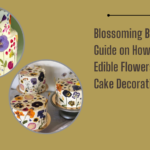Champagne, the epitome of celebration and sophistication, isn’t just a drink—it’s a masterpiece crafted through time-honored processes. The creation of this effervescent elixir involves meticulous steps that combine artistry and precision. Here’s a detailed journey into the meticulous process of making Champagne:
1. Grapes Selection:
Champagne begins with the careful selection of grapes. Specifically, three grape varieties—Chardonnay, Pinot Noir, and Pinot Meunier—are predominantly used. These grapes are harvested by hand, ensuring only the ripest and finest quality fruit is chosen.
2. Gentle Pressing:
Once harvested, the grapes undergo a delicate pressing process to extract their juice. Unlike regular winemaking, only the first pressing, known as the cuvée, is used for Champagne production. This initial juice is highly prized for its purity and flavor.
3. Primary Fermentation:
The extracted juice is then put through primary fermentation, where yeast is added to the grape juice in stainless steel or oak barrels. This process converts the sugars into alcohol, resulting in a still wine known as the base wine.
4. Blending:
The art of blending is crucial in Champagne-making. Master blenders, known as “Chefs de Caves,” meticulously blend different base wines to create a consistent and harmonious flavor profile for the final product. This blending process is a true test of expertise and intuition.
5. Secondary Fermentation:
In a process known as the traditional method or méthode champenoise, the blended wine is bottled and sealed with a mixture of sugar and yeast, triggering a second fermentation. The bottles are aged horizontally in cool, dark cellars for a minimum of 15 months (for non-vintage) or several years (for vintage Champagne).
6. Riddling:
After aging, the bottles undergo riddling—a process of gradually turning and tilting them to gather the sediment in the neck of the bottle. This sediment will eventually be removed in the next step.
7. Disgorgement:
The neck of the bottle, now containing the sediment, is frozen, and the temporary cap is removed. The pressure in the bottle ejects the frozen sediment plug due to carbonation. The bottle is then quickly topped off with a mixture called the dosage—a combination of wine and sugar—based on the desired sweetness.
8. Corking and Aging:
Finally, a cork is inserted into the bottle, sealing in the effervescence. The Champagne is left to rest and further age, allowing its flavors to harmonize, creating a symphony of taste and bubbles.
Conclusion:
Crafting Champagne is an art that combines tradition, expertise, and patience. Each step in its creation is crucial in delivering the exquisite flavors and effervescence that mark this iconic drink. As you raise a glass of this golden elixir, savor not just its taste but the centuries-old dedication and craftsmanship that go into every bottle. Cheers to the artistry of Champagne-making!
Whether celebrating a milestone or simply indulging in life’s pleasures, Champagne embodies the spirit of festivity and refinement—a testament to the meticulous process that transforms grapes into liquid luxury.







